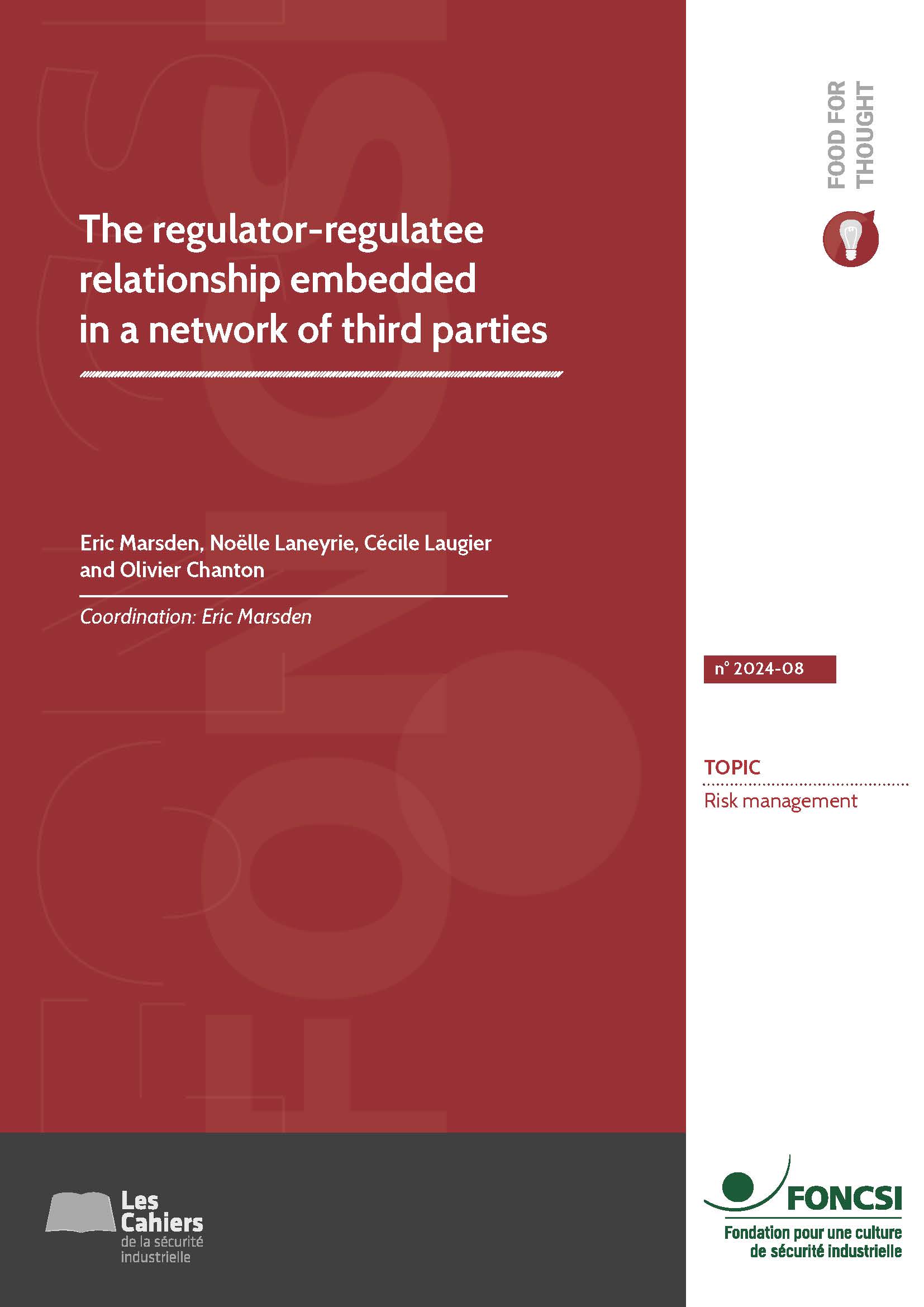The regulator-regulatee relationship embedded in a network of third parties
Regulator-regulatee
Industrial Safety "Cahiers"

Abstract
This document concerns the regulatory oversight and governance of high-hazard industrial activities. A complex set of laws, regulations and institutions contribute to the social control of these activities, reinforcing and serving as a complement to the risk prevention mechanisms put in place by operating companies. This document focuses in particular on the relationships between regulated firms, regulatory authorities and third party intermediaries who play a role in safety oversight (certification bodies, auditors, insurers, professional associations, etc.) and the impact of the quality of these relationships on industrial safety. The scope is the prevention of major accident hazards in different industry sectors (process industry, transport, energy), in France and at an international level.
We focus our attention on different forms of “regulatory coproduction” (often called coregulation), the act of enrolling the entities concerned by regulatory measures in their elaboration and the verification of their compliance, which is believed to improve their appropriation by private actors and thereby produce better oversight than classical command-and-control regulation. We analyze in particular the partial delegation of authority, internal risk control mechanisms and the use of third party intermediaries in the oversight process. This coproduction of regulation by public and private entities is increasingly used in different industry sectors, and leads to a more collaborative and interconnected regulatory process, based on a network of actors rather than a simple regulator-regulatee duopole.
Available translations
Most publications are licensed under the Creative Commons BY, information available in the document. See the reproduction conditions.





